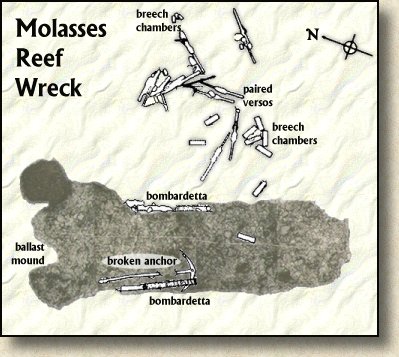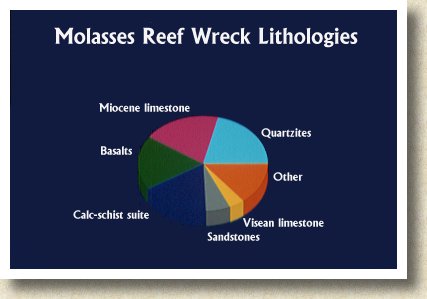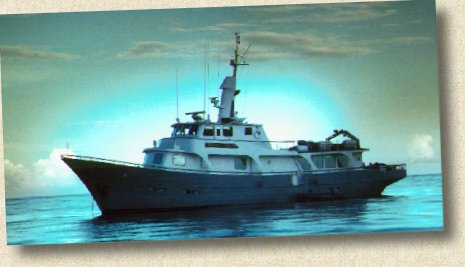 |
|
|
|
|
| Situated on the remote southwest rim of the Caicos Bank, Molasses Reef is a natural ship trap. Between 1982 and 1986, we completely excavated a shipwreck dating to a very early period of European presence in the Americas. Little was known about the ships of that period of exploration because those ships were not built using architectural plans. | |
Five things were immediately apparent to archaeologists
observing the site:
|
|
| What ship
was this? What was its mission? |
|
| Little remained of the ship’s wooden hull. Nearly five centuries on the hard sea floor, with little protection from a shallow layer of shifting sand, had left the ship’s hull exposed to shipworm and other forces of destruction. |  |
|
Luckily, the configuration of items on the Molasses Reef wreck were hauntingly similar to a shipwreck in the Bahamas partially salvaged in the mid-1960s—the Highborn Cay wreck.
|
|

|
|
|
Long years after the excavation, a pioneering study of the origins of the ballast stones—a case of "geology upside down"—pinpointed Lisbon, Portugal, as the possible site of the vessel's construction. Other stones originated in the Azores, Canaries, or Maderia, the east coast of Spain, and Bristol, England—all common trade connections with Lisbon. |
|
Excavation is just the beginning of exploring
a shipwreck. Many years of conservation and
research in libraries and archives
uncovered much more of the Molasses Reef wreck.
Other Ships of Discovery sitesBahía Mujeres Wreck
|
|

